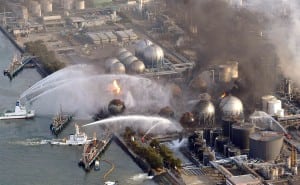
RadWaste Monitor Vol. 11 No. 4
Visit Archives | Return to Issue PDF
Visit Archives | Return to Issue PDF
RadWaste & Materials Monitor
Article 1 of 7
January 25, 2019
Divided NRC Approves Post-Fukushima Nuclear Safety Rule

A split Nuclear Regulatory Commission on Thursday narrowly signed off on a new rule intended to further protect U.S. nuclear power plants from a disaster akin to the March 2011 reactor meltdowns at the Fukushima Daiichi facility in Japan.
Commissioners voted 3-2…
Partner Content